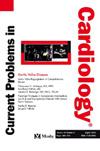Machine learning algorithms for heart disease diagnosis: A systematic review
IF 3.3
3区 医学
Q2 CARDIAC & CARDIOVASCULAR SYSTEMS
引用次数: 0
Abstract
Background
The heart is a vital organ that pumps blood throughout the body. Its proper functioning is crucial for maintaining overall health, and any malfunction can significantly impact other bodily systems. Recently, machine learning has emerged as a valuable tool in cardiology, enhancing the prediction and diagnosis of heart diseases. By analyzing clinical data, these algorithms reveal patterns that traditional methods might miss, aiding in early detection and personalized treatment. This study aimed to evaluate the most widely used and accurate supervised machine-learning algorithms for predicting and diagnosing heart disease.
Methods
A systematic analysis was conducted using research articles obtained from six reputable academic databases: Scopus, PubMed, ScienceDirect, Dimensions, ProQuest, and IEEE. The review covers the years from 2013 to 2024. The focus was on the application of various supervised machine-learning algorithms for diagnosing heart disease.
Result
The study identified twenty-four relevant studies that examined the use of supervised machine learning algorithms for diagnosing and predicting heart disease. Among these, five algorithms were prominent: Decision Trees, Logistic Regression, Naive Bayes, Random Forests, and Artificial Neural Networks. Decision Trees were found to be the most commonly applied and best-performing algorithm, followed by Logistic Regression and Naive Bayes. However, Artificial Neural Networks and Random Forests received less attention despite their potential for high accuracy in certain contexts.
Conclusion
The research findings highlight important trends in heart disease prediction models using supervised machine learning. By examining these trends, researchers can identify algorithms that improve forecasting accuracy, guiding future research objectives and advancing the effectiveness of heart disease diagnosis.
心脏疾病诊断的机器学习算法:系统综述。
背景:心脏是向全身输送血液的重要器官。它的正常运作对维持整体健康至关重要,任何故障都会严重影响其他身体系统。最近,机器学习已经成为心脏病学中一个有价值的工具,增强了心脏病的预测和诊断。通过分析临床数据,这些算法揭示了传统方法可能遗漏的模式,有助于早期发现和个性化治疗。本研究旨在评估用于预测和诊断心脏病的最广泛使用和最准确的监督机器学习算法。方法:系统分析从六大知名学术数据库Scopus、PubMed、ScienceDirect、Dimensions、ProQuest和IEEE中获取的研究论文。该审查涵盖2013年至2024年。重点是各种监督机器学习算法在诊断心脏病方面的应用。结果:该研究确定了24项相关研究,这些研究检查了使用监督机器学习算法来诊断和预测心脏病。其中,五种算法是突出的:决策树,逻辑回归,朴素贝叶斯,随机森林和人工神经网络。决策树被认为是最常用和性能最好的算法,其次是逻辑回归和朴素贝叶斯。然而,人工神经网络和随机森林受到的关注较少,尽管它们在某些情况下具有高精度的潜力。结论:研究结果突出了使用监督机器学习的心脏病预测模型的重要趋势。通过研究这些趋势,研究人员可以确定提高预测准确性的算法,指导未来的研究目标,提高心脏病诊断的有效性。
本文章由计算机程序翻译,如有差异,请以英文原文为准。
求助全文
约1分钟内获得全文
求助全文
来源期刊

Current Problems in Cardiology
医学-心血管系统
CiteScore
4.80
自引率
2.40%
发文量
392
审稿时长
6 days
期刊介绍:
Under the editorial leadership of noted cardiologist Dr. Hector O. Ventura, Current Problems in Cardiology provides focused, comprehensive coverage of important clinical topics in cardiology. Each monthly issues, addresses a selected clinical problem or condition, including pathophysiology, invasive and noninvasive diagnosis, drug therapy, surgical management, and rehabilitation; or explores the clinical applications of a diagnostic modality or a particular category of drugs. Critical commentary from the distinguished editorial board accompanies each monograph, providing readers with additional insights. An extensive bibliography in each issue saves hours of library research.
 求助内容:
求助内容: 应助结果提醒方式:
应助结果提醒方式:


